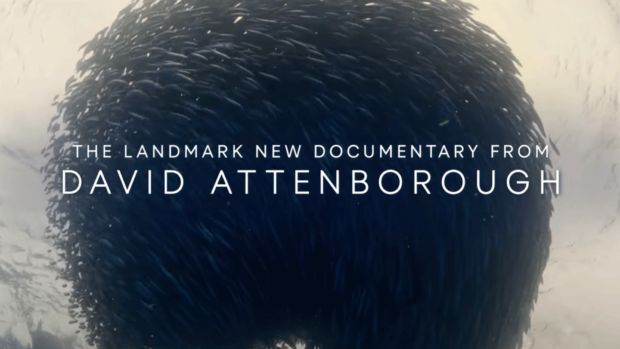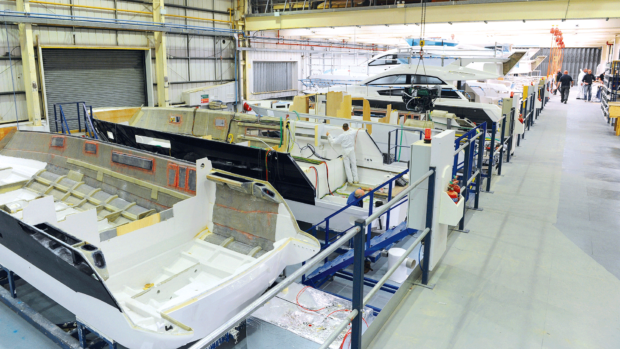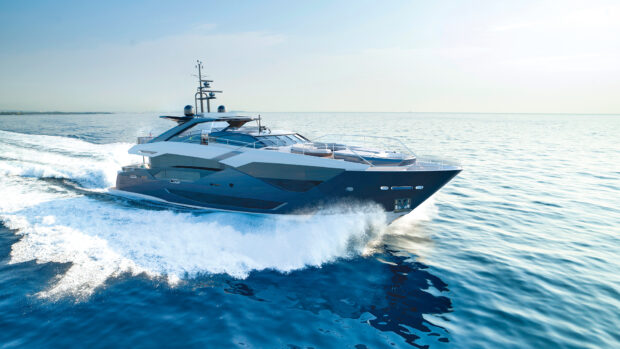Our News Editor recalls what he learnt on his first weekend of formal training at Mendez Marine on the River Hamble
While there’s no replacement for raw boating experience, there’s quite nothing like a weekend of boat training to drive home what you do and don’t know.
Having cut my teeth inland on much larger boats, refining the basics aboard a 5.8m RIB on Southampton water to get my RYA Powerboat Level 2 licence was an experience of fine margins and precise handling.
My hosts for the weekend were Hamble-based training centre Mendez Marine, which runs a range of courses for boaters of every level.
RYA Level 2 Powerboat is where many boaters start their training and while it is suitable for beginners, it’s no walk in the park.
In a group of three, alongside a 20-year veteran RYA Yachtmaster, I quickly embraced my role as the dunce of the class, regularly asking the stupid question.
We began with the basics of wind and tide, and using these elements as your brakes when performing slow-speed manoeuvres. Next came Met Office forecast terminology and a quick rundown of the local bylaws.
Our instructor Kieran belied his years with two pieces of sage advice that I would later wish I had tattooed onto the inside of my eyelids: “Steer before gear, and keep one hand on steer and one hand on gear”.
The classroom section was necessary but mercifully short – the July sun was beating down and we’d come here to do some actual boating.
Out on the water
Kieran introduced us to Kake, our vessel for the day, with the fondness and respect that reflected his years growing up with boats of all sizes.
This Ribcraft powerboat was fitted out with GPS, VHF, a 140bhp outboard and a windscreen, which would come in handy during the high-speed thrills of day two.
After a quick orientation we cast off into a particularly strong spring tide and set about proving our mettle with some basic manoeuvres.

Holding off behind pylons and picking up a mooring buoy proved straightforward enough, but coming alongside was particularly challenging as the tide raced in.
The best way I can describe it to a non-boater is: imagine parallel parking a car on a slow-moving treadmill.
Kieran’s patient and encouraging attitude ensured we could all tick this off eventually, even if I took a few attempts to perform the manoeuvre without ferry drifting or bashing a sponsom against the pontoon.
Stopping for lunch back at base halted our progress up the Hamble, but we were relived to sit on a more comfortable seat.
While Kake was fitted out with everything we could need from a technical point of view, she was not built for comfort and the narrow seats meant that we were staggering like John Wayne after a two-hour stint on the river.
The afternoon’s activity started with turning in a confined space – a drill that really brought the whole ‘steer before gear’ principle into focus when the penalty for failure was bumping into a £2m superyacht.
The blazing sunshine had brought local river users out in their droves, and we were constantly reminded of the rules of the road as we navigated past sailboats, canoes, motorcruisers and paddleboarders.
Through it all Kake was highly responsive, much more so than I was expecting: it took a while to realise that small adjustments would be enough to change our course sufficiently.

With all our drills complete, we nipped back to our pontoon as low tide approached, thankful for our trim tilt and skeg-adjusted depth sounder as less than 1m of water remained at HQ.
We went our separate ways for the night, and while my boating skills had been given a thorough workout, I knew that the real fun had all been saved for day two.
Thrills and spills
A mercifully overcast second day saw us head out onto Southampton water for some high-speed action, and as Kake hit 4,000rpm and rose up onto the plane, I was reminded why I was doing this in the first place.
Nothing quite compares to the raw thrill of piloting a RIB at 25 knots. With the responsiveness of a rollercoaster and excitement to match, it’s easy to see why this is such a popular gateway to motorboating.
Kake‘s unique characteristics came into play, as she smoothly turned to starboard but put up much more of a fight when turning to port.
The urge to grab the wheel with both hands was hard to resist, but Kieran’s second mantra ensured that we were never allowed to let go of the throttle for very long.
S-turns and powered U-turns were followed by tighter U-turns and P-turns, as we rode the considerable wash thrown up by sportsyachts and catamarans.
Once Kieran was satisfied that we knew how to do the fun stuff, we dropped anchor at Hythe for a lunch break and quick buoyage quiz.

One of the most useful things you can learn on a training course is what to do in an emergency and the man overboard procedure brought together everything we had learned so far.
Using a fender and a bit of clever distraction, Kieran simulated this worst case scenario and we were required to perform a P-turn before approaching upwind with the utmost precision to retrieve our tiny target.
The side-on drifting approach was also covered, by which time our sensei was satisfied that we could cope with a real-life MOB.
Hatching a plot
With chartplotters so commonplace these days it can be easy to neglect more traditional navigation skills, but this course ensured we could cope without such modern fripperies.
Classroom theory was put into practice as we took bearings from a compass to determine our exact location on the chart before following bearings that we’d mapped out in the morning to buoy hop our way back to the mouth of the Hamble.
Coming off Southampton water and back onto the river with its six-knot speed limit felt like turning off a motorway, and this led some to resort to impatient overtaking as we patiently cruised back to our berth before low tide.
I certainly felt a great deal of pride upon being presented with my certificate, and even though it is not a legal requirement unless your boat is more than 24m long, a course like this should be seen as an essential primer for any self-respecting skipper. I’m only ashamed I didn’t do one sooner.
Mendez Marine offers boat training ranging from VHF courses through to Yachtmaster exams. For more information, visit mendezmarine.co.uk or call 01489 588977.










